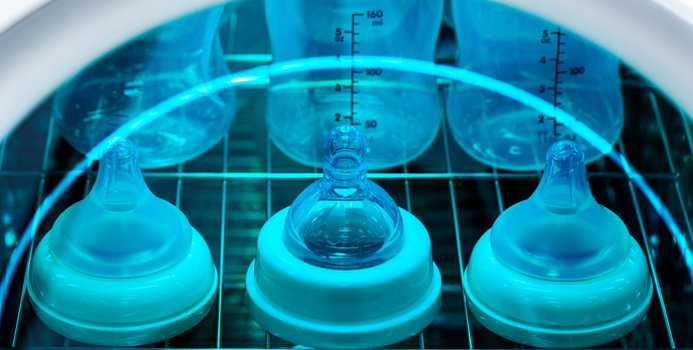The ability to zap germs with a light instead of toxic ingredients like bleach? It almost sounds like a science fiction movie or a futuristic gadget, too good to be true. So is it? Here’s a rundown on what you need to know about the efficacy of UV sanitizing lights.
According to the manufacturers of UV devices that range from wands to “phone soap,” used to sanitize objects kill up to 99.9 percent of germs in 10 seconds of exposure. However, that number seems pretty high. FOX Carolina conducted its own study on whether or not UV sanitizing lights are effective enough to be used in a hospital setting, a known bastion of germs. By cleaning common items with a physical cleaner first, such as alcohol or bleach, it was found that the UV lights cleaned up remaining germs. Hospitals usually bleach or another known germ cleaner to clean patient rooms and have found that UV equipment is too large and expensive and less effective than disinfectant methods already in place.
UV light has been used in some applications for eons, like in ponds, to kill off unwanted growth. And many travelers love the idea of a wand that kills off the germs that notoriously live in hotel rooms, but the wands aren’t super useful for disinfecting surfaces that aren’t flat. Telephones and other nooks and crannies are hard to disinfect. In addition, exposure to the UV light is dangerous and can harm skin and eyes, so using a UV device in place of chemicals isn’t necessarily less harmful to health.
Although some online reviews rave about using UV lights to get rid of lingering smells, it’s hard to tell for sure how effective they are. As the technology improves, UV sanitizing lights are likely to become more effective. Until then, be sure to use bleach on the dirtiest areas in your home: the toilet seat in the bathroom and the cutting boards in the kitchen.
[Image via Shutterstock]



